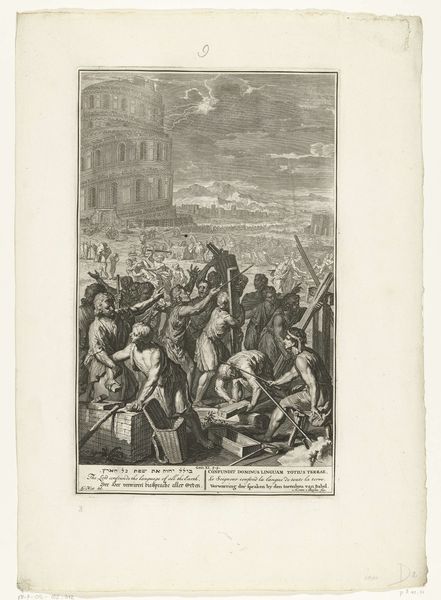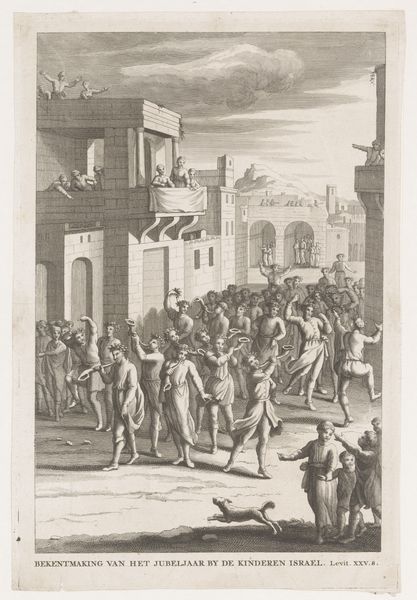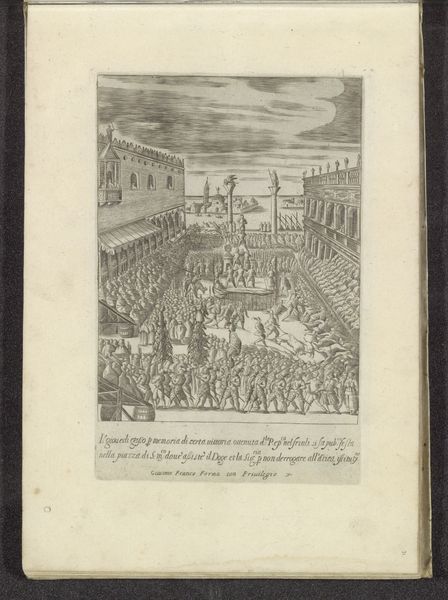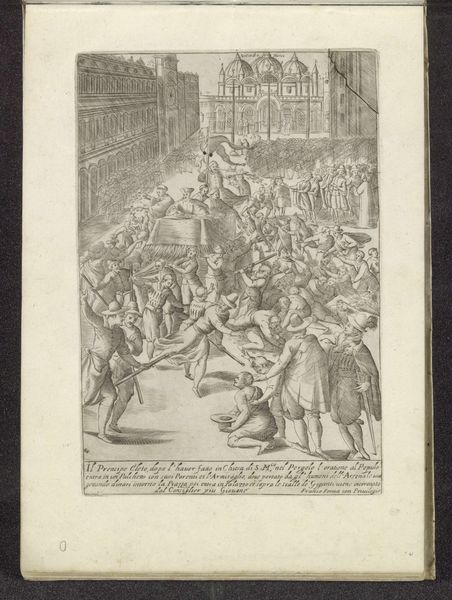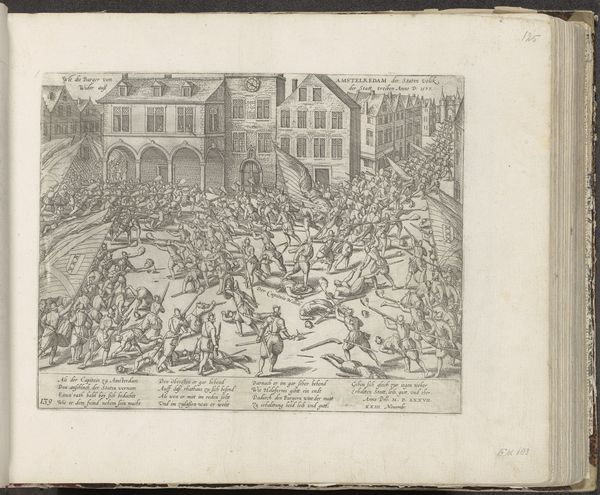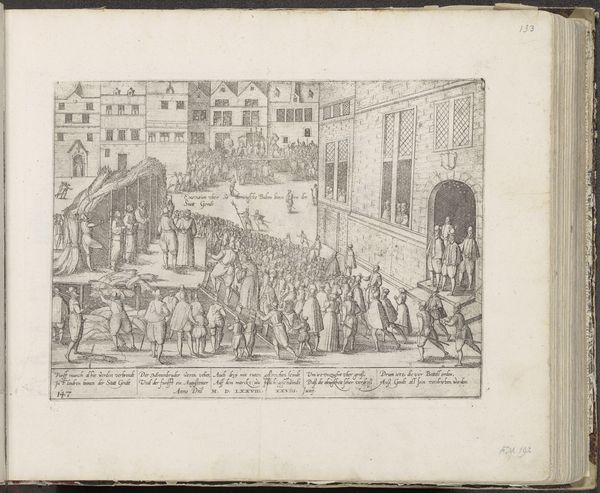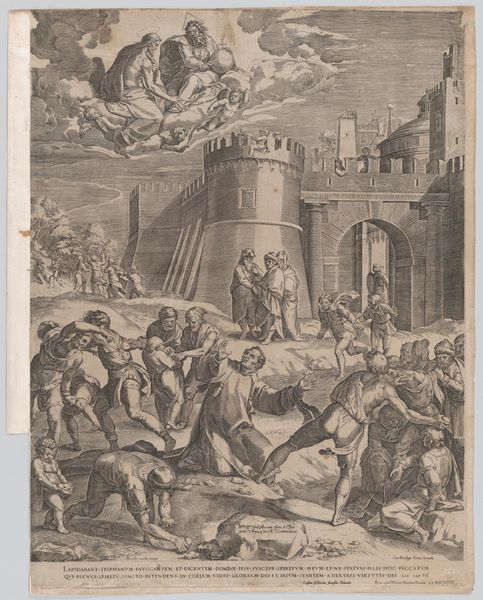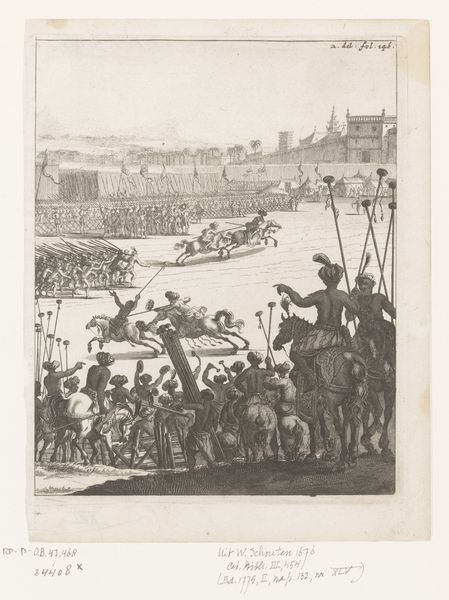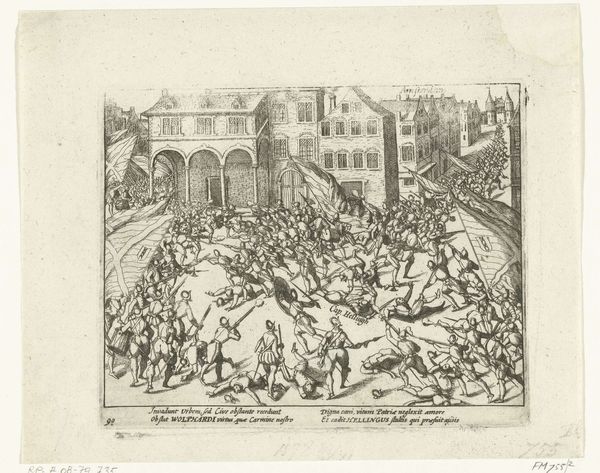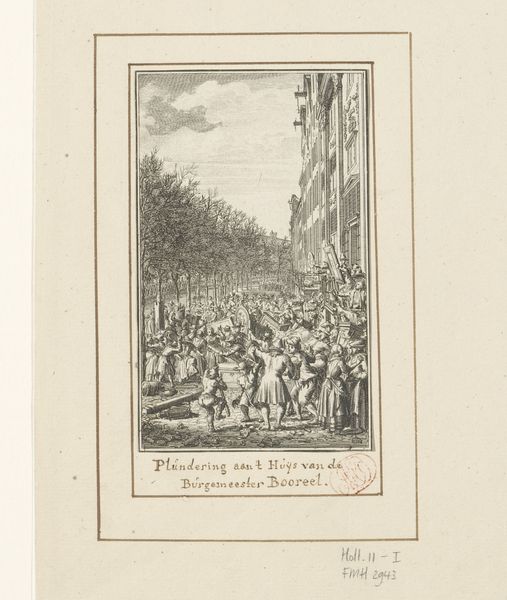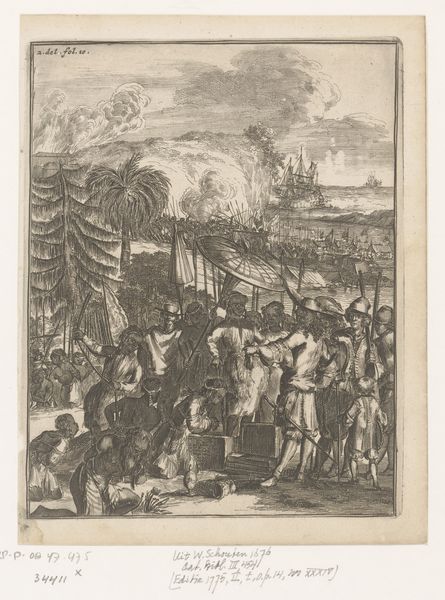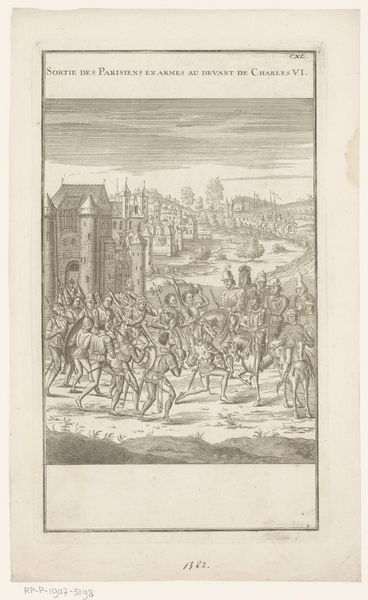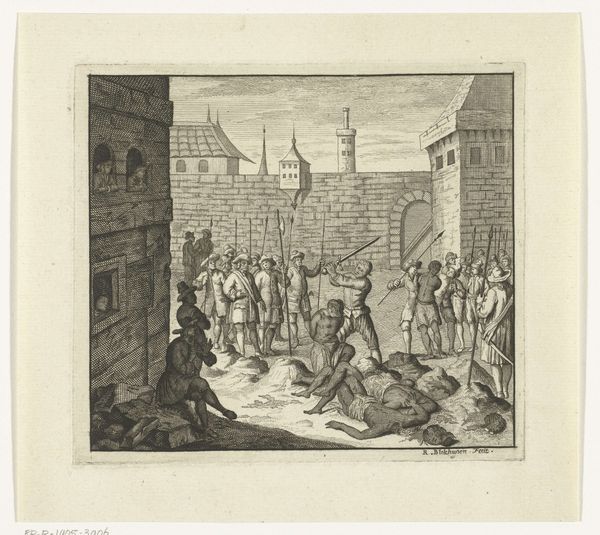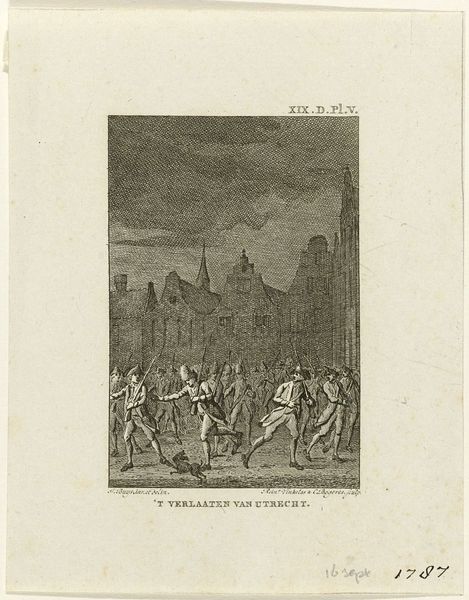
print, engraving
#
ink paper printed
# print
#
pencil sketch
#
asian-art
#
old engraving style
#
history-painting
#
engraving
Dimensions: height 194 mm, width 155 mm
Copyright: Rijks Museum: Open Domain
This 17th-century etching, whose artist is unknown, depicts the attack on the Palace of the Sultan of Mataram, in present-day Indonesia. The image creates meaning through visual codes and historical associations. The charging soldiers and the elephants bearing riders signal the grandeur and military might of the Sultanate of Mataram. But this image wasn't made for the Sultan. It was printed in the Netherlands during the Dutch colonial period. The Dutch East India Company was a major economic force with its own military. I wonder, were these soldiers fighting for or against the Dutch? Is the artist trying to convey the power of the Sultanate or to celebrate its defeat? How would the image have been perceived by a Dutch audience at the time? These are the kinds of questions a historian might ask. By researching Dutch colonial history, examining other images from the period, and studying the archives of the Dutch East India Company, we can better understand the social and institutional context in which this artwork was produced and consumed.
Comments
No comments
Be the first to comment and join the conversation on the ultimate creative platform.
